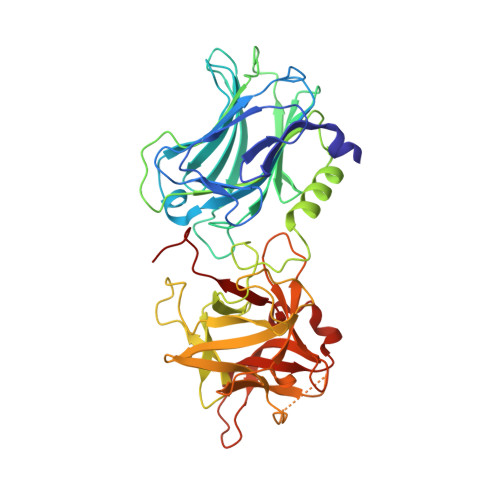Identification of a Unique Ganglioside Binding Loop within Botulinum Neurotoxins C and D-SA .
Karalewitz, A.P., Kroken, A.R., Fu, Z., Baldwin, M.R., Kim, J.J., Barbieri, J.T.(2010) Biochemistry 49: 8117-8126
- PubMed: 20731382
- DOI: https://doi.org/10.1021/bi100865f
- Primary Citation of Related Structures:
3N7J, 3N7K, 3N7L, 3N7M - PubMed Abstract:
The botulinum neurotoxins (BoNTs) are the most potent protein toxins for humans. There are seven serotypes of BoNTs (A-G) based on a lack of cross antiserum neutralization. BoNTs utilize gangliosides as components of the host receptors for binding and entry into neurons. Members of BoNT/C and BoNT/D serotypes include mosaic toxins that are organized in D/C and C/D toxins. One D/C mosaic toxin, BoNT/D-South Africa (BoNT/D-SA), was not fully neutralized by immunization with BoNT serotype C or D, which stimulated this study. Here the crystal structures of the receptor binding domains of BoNT/C, BoNT/D, and BoNT/D-SA are presented. Biochemical and cell binding studies show that BoNT/C and BoNT/D-SA possess unique mechanisms for ganglioside binding. These studies provide new information about how the BoNTs can enter host cells as well as a basis for understanding the immunological diversity of these neurotoxins.
- Department of Microbiology and of Molecular Genetics, Medical College of Wisconsin,Milwaukee, Wisconsin 53226-3548, USA.
Organizational Affiliation:
















